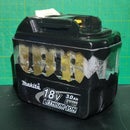Introduction: Half Life 2 Zombie Costume
One of the largest annual events at my place of work takes place around Halloween, and this year, for the second consecutive year, it was host to awards ceremony for all of the major regional halloween scare attractions.
I only found out I would be attending several days prior, so I began looking for costume ideas that I could do justice to within a minimal timescale.
While my first thought was a flood combat form (Halo 3), the design would have been far too complex to achieve in such a short time, and I eventually decided on the Half-Life 2 zombie design.
The materials and approximate quantities required are:
- 1l of polyester resin
- 1m² of 30gsm fibreglass tissue
- 1m² of 200gsm fibreglass matting
- Liquid latex (Up to a litre)
- Expanding foam
- Steel armature wire (1m of 3-4mm diameter)
- PVC pipe and paper rope (To simulate ribs / organs)
- Various fabrics and skin tone paints
- Clothing based on the chosen design
Step 1: Reference Images
Most of the Half-Life zombies can be broken down into 3 build sectors from a costume perspective:
- Headcrab(s)
- Clothing
- Exposed Body Parts
The headcrab part of the costume is by far the most challenging, as matching the shape and colour of the headcrabs is tricky without either spending a lot of time generating a real world model from templates, or by sculpting them from scratch. One great benefit of the headcrabs as a costume is that they remove the need to apply any zombie themed face paint or prosthetics.
The clothing has the greatest degree of variation between each design, and depending on which model you choose, you may end up spending more on the clothing (i.e., Zombine body armour) but saving time in other areas (Zombines would not need prosthetic ribs or organs making).
While not all models have exposed ribcages, one common trait among them is the elongated fingers, or "claws". To save time and for ease of getting around, I forwent the prosthetic hands, but may implement a future system using gloves.
I settled on cross between a couple of designs, using the ribcage of the regular zombie with the clothing of the scientist zombie from Black mesa.
The template I used for the headcrab can be downloaded via this link.
Step 2: Headcrab Scaling
Before beginning construction of the Headcrab, I decided to check the default scaling of the template to see how well it compared with the in-game model. After grabbing a model of the HL2 normal zombie, I used Noesis (A model browser / viewer to convert the zombie into a file that could be read by Pepakura Designer. Pepakura designer is one of the simplest ways to resize models due to the inclusion of a tool that allows you to measure the distance between two vertices.
I couldn't scale the zombie based on my height, as the zombie model has a "squashed" head. If the head remained, it would actually protrude from the top of the headcrab in its in-game position. Instead, I re-scaled it based on the foot-to-shoulder distance then checked the new scaling of the Headcrab by comparing the distance between notable features on the Headcrab's body for both models (The leg positions were different, so using the overall model length would have been inaccurate). After enlarging the model by around 5% and checking there would be enough of a head gap once I replaced some sections of the neck with fabric, I began the construction stage.
Step 3: Headcrab Pepakura
To help the headcrab sit better on my head, I knew it would be useful if the legs were posable to some degree, so I left most of each leg out of the print area so I could make them from other materials. Typically I would print pepakura templates onto 160 - 240gsm card, but having none available at the time, I opted for regular 80gsm paper. While suitable for smaller models, constructing a model almost half a meter in diameter will result in more warping than a card version, although, given the organic nature of the model these were of little consequence. There was a huge, unintended benefit of using paper however; the sharp points where polygons meet were far easier and neater to crush in order to round off the vertices, eliminating the need for any filler.
The thinner the card or paper, the more trouble you'll have with fibreglassing. The paper structure is fragile enough in its default state, but a thin layer of resin would not only weaken the paper as it soaked in, but also add about 150-200g, inevitably leading to it collapsing under its own weight. My normal workaround is to do a full resin layer inside and out, allowing it to cure before beginning with fibreglass, but in this case I created a rigid skeleton inside the headcrab using expanding foam. This is also an effective way to secure the steel armature wire in place, centred on the leg "stumps".
Step 4: Exposed Chest Cavity
Working back and forth between the Headcrab and the chest section as the layers of expanding foam set, I began the open chest cavity by stretching out a wide "apron" of beige fabric over a mannequin torso, and pressing a section of wire mesh down to conform to the shape, securing it with a thin layer of expanding foam.
While intended as a rigid structure to prevent any of the organs / ribs wobbling and being detached, in hindsight it was a bad design, as it greatly restricted movement, and as much as half of it would be covered by the lab coat regardless. applying foam features directly to an old t-shirt over a 20cm wide by 40cm high area would have been sufficient, and made taking it on and off much easier.
Expanding foam becomes tacky to the touch after about 10 minutes, and will be mostly rigid after 20-30 minutes (Depending on the depth). In the short time that it is no longer wet but also not completely set, you can press it by hand to deform it, reducing the amount of sanding or additional filling needed. It's such a soft material that most of the cleanup can be done with a low-grit sanding block and a craft knife.
The intestines were made from a combination of paper rope and wadding, tied with string through the back of the chest piece. The ribs were short sections of PVC pipe bent to shape with armature wire and filled with expanding foam to give them more of a solid appearance, fixing them in place over the lungs.
Once all features were secured down, I folded the excess fabric back over the exposed organs, and trimmed it down, cutting a rough oval into the middle to expose most of the detail, then using a thin layer of expanding foam to glue it down.
Step 5: Headcrab Fibreglassing
With the internal cavity reinforced, I fitted some leftover paper rope onto the steel wire and used wadding to bulk it out near the joints and feet, completing the overall shape of the Headcrab.
I began with the heavier weight fibreglass mat on most of the low detail areas, then re-fibreglassed everything using the fibreglass tissue, but only as far as the extent of the original paper model. After checking for soft spots and reinforcing it with additional patches of fibreglass tissue, I glued on a neck seal made from an offcut of fabric and began work on the legs.
Despite never having tried this method before, I was surprised by how well it worked; rather than use the polyester resin, I applied layers of fibreglass tissue wetted with liquid latex until all the legs had been coated and overlapped the fibreglass body by 1-2 inches. I coated the fabric neck seal with latex, but only patched the join with the fibreglass tissue, rather than going all the way to the edge.
After giving the legs a second layer of fibreglass tissue, I gave the entire thing two coats of liquid latex, including the entire resin / fibreglass body so that there would be no edges that would eventually peel off. Despite latex not adhering very strongly to the resin, the absence of any air gaps or places to peel the latex up from meant that the latex stuck to the whole model very well, and provided a seamless transition between the soft and hard parts of the Headcrab.
Step 6: Painting
As with the Headcrab, I gave the chestpiece two coats of latex to seal the foam and fill in any small air pockets. Paint tends to crack when applied directly to latex, so it's standard practice to mix paints with latex in roughly equal parts before painting. I used a very basic colour palette of white, reds and browns, since the materials' original colours were already pretty close to what I was going for.
With the base coats finished, I used watered down browns and reds to simulate the look of dirt and blood on the lab coat, organs and Headcrab.
To remove the stickiness of the dry latex, dust over the latex with a small amount of chalk or talc powder, then dab it away with a wet cloth. To finish the paint job, spray on a light coat of clear sealer. I used gloss for the organs (It gave more of a shiny, wet look!) and satin for the Headcrab.
Step 7: Final Thoughts
In the very limited time I had, I was able to finish the costume to my satisfaction, though looking back at it, it would benefit from some additional modifications, such as physically distressing the clothing. Since completing the costume, I have added a Black Mesa themed ID badge to the lab coat.
I'm currently working on ordering and modifying a set of full sleeve gloves with thin wire, fabric and latex so that I can easily add and remove the elongated fingers to the costume.
One final improvement would be to increase the visibility from within the Headcrab. It currently has a few cutouts between the fangs, though the downward pitch of the headcrab means these point mainly at the floor. My solution was to combine a cheap VR phone mount with a USB OTG receiver and wireless FPV camera, A setup which cost under $30, or as little as half of that less if you opt for a wired USB camera. By mounting the camera externally, you will have a full view of everything outside without creating obvious breaks in the structure of the headcrab.

Participated in the
Halloween Contest 2018











